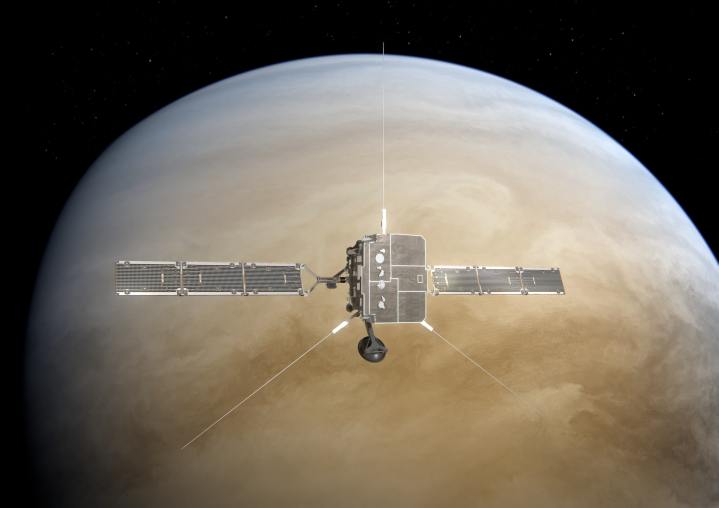
The European Space Agency (ESA)’s Solar Orbiter has already visited the sun up close, following its launch in February this year. But the researchers want the orbiter to get even closer, so to achieve that the orbiter is getting a boost from another planet — passing by Venus to use the planet’s gravity to push it on a path even closer to the sun. That means the orbiter will be swinging by Venus this Christmas on its first gravity assist flyby.
Solar Orbiter is due to make its closest approach to Venus at 4:39 a.m. PT on Sunday, December 27, when it will pass within just 4,600 miles of the cloud tops of the planet. The craft will be performing several such flybys over the next decade, each time passing closer and closer, and each time being sent off on an orbit that also brings it closer to the sun.
The researchers in charge of Solar Orbiter are mostly focused on understanding more about the sun, but they aren’t passing up this chance to investigate Venus as well. As the craft passes the planet, it will use several of its instruments to record data.
Solar Orbiter does have an advanced camera which it will use to photograph the sun from closer than ever before, but it won’t be able to use its camera to take pictures of Venus as it must stay pointed toward the sun. However, it can use its other instruments like its magnetometer, its radio and plasma wave sensors, and its energetic particle detector. The idea is to use these instruments to measure the space around Venus and see what kind of magnetic, plasma, and particle environment exists there.
Venus has historically been rather overlooked as a target of research when compared to our other more popular planetary neighbor, Mars. That’s partly because Venus is very difficult to study — it has thick clouds of sulfuric acid in its atmosphere which block the view of the surface from orbit. It’s also the hottest planet in the solar system, hotter even than Mercury which is closer to the sun. That’s because the gases in the atmosphere keep the heat in, meaning the surface temperature is up to 900 degrees Fahrenheit (480 degrees Celsius).
But recent indications that there could be bacterial life in the Venusian clouds have reignited interest in the planet, with suggestions for exploring it ranging from an armada of hot air balloons to sending stingray-inspired craft to glide through its atmosphere.



